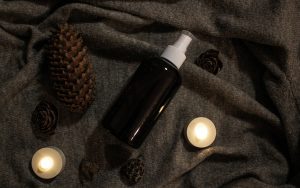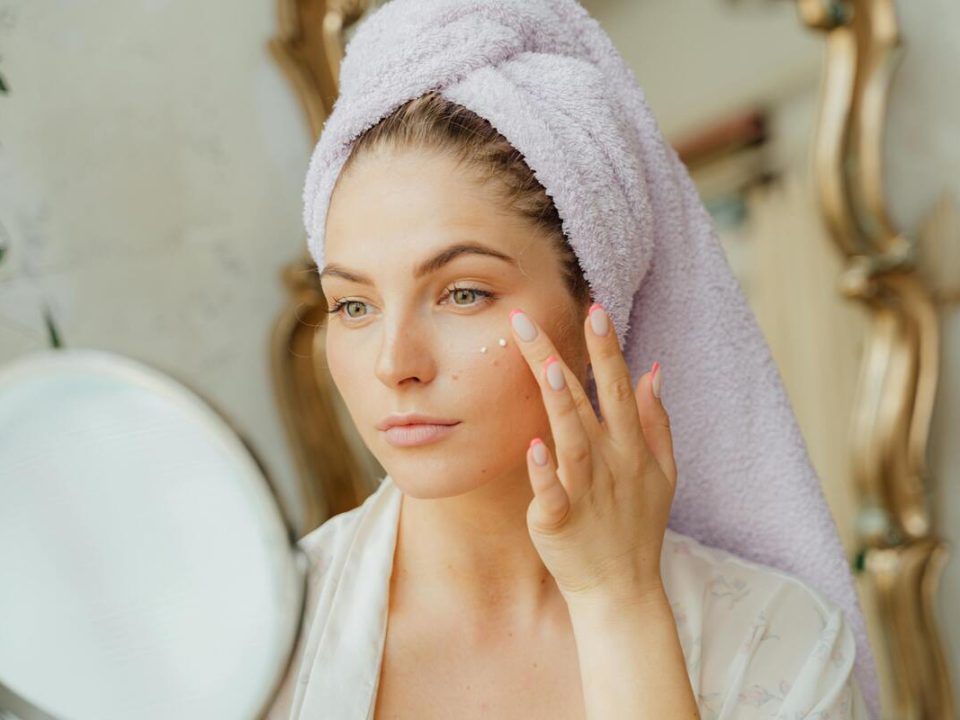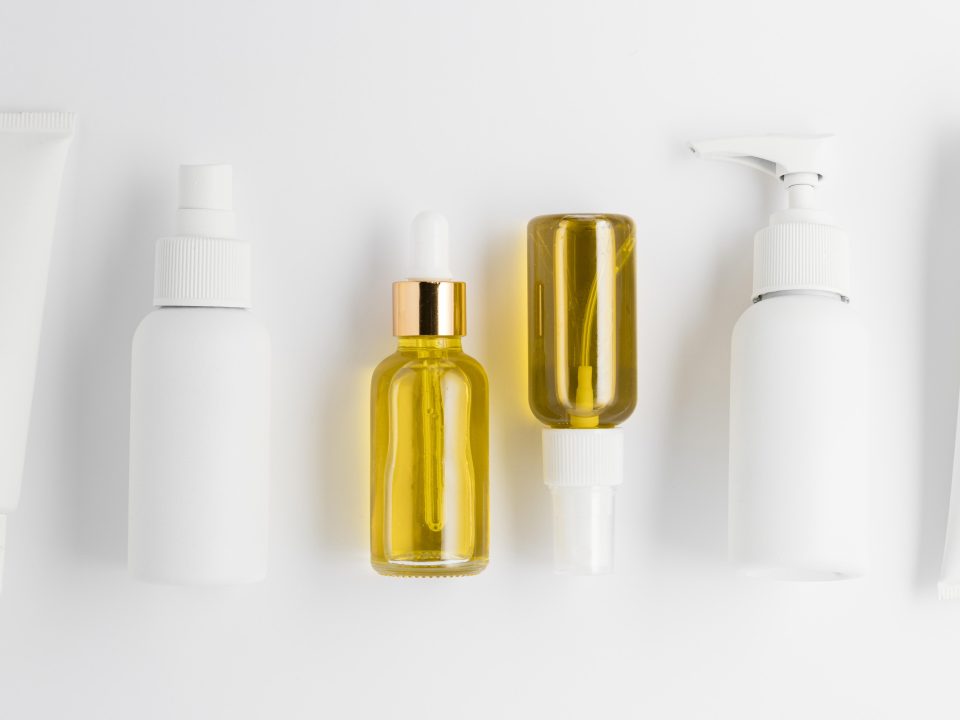
Does Salicylic Acid Fade Dark Spots?
February 5, 2024
What Not To Mix With Salicylic Acid Skincare?
March 7, 2024Salicylic acid, a BHA with a surprisingly long history, has become a popular skincare ingredient. Its origins can be traced back to ancient civilizations who used willow tree bark, containing salicin (a precursor to salicylic acid), for medicinal purposes. Today, salicylic acid remains a valuable tool in dermatology, offering a variety of benefits for various skin concerns. From combating blemishes to promoting a brighter, smoother complexion, salicylic acid’s unique properties make it a powerful ally for achieving healthy, radiant skin. Let’s delve deeper into the fascinating world of salicylic acid and explore its effects on your skin.
Salicylic Acid and Acne: Understanding the Mechanism
Acne, a common skin concern affecting millions worldwide, occurs due to a complex interplay of factors. Understanding these factors is crucial to effectively address breakouts, and salicylic acid plays a significant role in the fight against acne thanks to its unique properties.
The Formation of Acne:
The journey of an acne breakout starts with the overproduction of sebum, an oily substance naturally produced by the sebaceous glands. This excess oil, combined with dead skin cells, can clog pores. This creates a breeding ground for the bacteria Propionibacterium acnes (P. acnes), which thrives in this oily environment. P. acnes triggers inflammation, leading to the development of various acne types.
How Salicylic Acid Combats Acne:
Salicylic acid, a BHA (beta hydroxy acid), offers a multi-pronged approach against acne.
Exfoliation: Unlike AHAs (alpha hydroxy acids) that work on the skin’s surface, salicylic acid, being oil-soluble, has the unique ability to penetrate deeper into the pores. This allows salicylic acid to:
Loosen dead skin cells: By gently dissolving the glue-like substance holding dead skin cells together, salicylic acid prevents them from building up and clogging pores.
Break down sebum plugs: Salicylic acid’s oil-soluble nature allows it to dissolve sebum, the oily substance that contributes to clogged pores. This keeps pores clear and prevents breakouts.
Anti-inflammatory Properties:
While not its primary function, salicylic acid also exhibits mild anti-inflammatory properties. This can help reduce the redness and swelling associated with inflammatory acne lesions, such as papules and pustules.
Types of Acne Salicylic Acid Can Address:
Salicylic acid is particularly effective against non-inflammatory acne types:
Blackheads: These occur when clogged pores remain open, allowing the sebum inside to oxidize and turn black. Salicylic acid’s ability to clear clogged pores helps prevent and combat blackheads.
Whiteheads: Unlike blackheads, whiteheads are closed comedones, meaning the clogged pores are closed off and appear white. Salicylic acid’s exfoliating properties can help remove the dead skin cells blocking the pore and allow the whitehead to surface, facilitating its removal.
While salicylic acid can help with inflammatory acne like papules (red bumps) and pustules (pus-filled bumps) by reducing inflammation and promoting drainage, it may not be the sole solution for severe cases. In these situations, a dermatologist might recommend combining salicylic acid with other acne treatments like retinoids or benzoyl peroxide.
Salicylic Acid for Comedones:
Comedones, also known as microcomedones, are the earliest stage of acne development and are essentially microscopic clogs within the pore. Salicylic acid, by preventing the buildup of dead skin cells and sebum, can help prevent the formation of comedones and halt the progression to full-blown acne breakouts.
Comparison with Other Acne Treatments:
While salicylic acid is a valuable tool for acne, it’s important to understand its limitations and how it compares to other common treatments:
Benzoyl Peroxide: This topical medication directly targets P. acnes bacteria. While effective against inflammatory acne, benzoyl peroxide can be harsher and cause dryness or irritation on some skin types.
Retinoids: These prescription medications come in various forms and promote cell turnover, unclog pores, and reduce inflammation. However, retinoids can be more drying and require sun protection due to increased sun sensitivity.
Salicylic acid shines in its gentleness and effectiveness against clogged pores and non-inflammatory acne. However, for more severe acne cases, a dermatologist might recommend a combination treatment approach tailored to individual needs.
Salicylic Acid as an Exfoliant: Benefits Beyond Acne
Exfoliation is a cornerstone of any healthy skincare routine. It involves removing the outermost layer of dead skin cells, revealing the fresher, healthier cells beneath. This process offers numerous benefits for overall skin health, making salicylic acid’s exfoliating properties valuable beyond just acne treatment.
The Importance of Exfoliation:
As we age, our skin cell turnover naturally slows down. Dead skin cells accumulate on the surface, leading to a dull, rough appearance, clogged pores, and uneven skin tone. Regular exfoliation addresses these concerns by:
Removing dead skin cells: This allows the underlying healthy skin cells to shine through, resulting in a brighter, smoother complexion.
Promoting cell turnover: Exfoliation stimulates the skin’s natural cell renewal process, encouraging the production of new, healthy skin cells. This can lead to firmer, more youthful-looking skin.
Unclogging pores: By removing dead skin cells that can contribute to clogged pores, exfoliation helps prevent breakouts and blackheads.
Salicylic Acid: A Powerful Exfoliant:
As a BHA, salicylic acid’s oil-soluble nature allows it to penetrate deeper into the skin compared to AHAs (alpha hydroxy acids), which work primarily on the surface. This deeper penetration grants salicylic acid unique exfoliating benefits:
Reaching within pores: Salicylic acid can travel down into pores, dissolving the glue-like substance holding dead skin cells together. This allows for the gentle removal of dead skin cell buildup and sebum, preventing clogged pores and promoting smoother skin texture.
Encouraging cell turnover: Salicylic acid gently loosens the bonds between dead skin cells, promoting their natural shedding and stimulating the production of new skin cells. This can lead to a more youthful and radiant appearance.
Beyond Acne: Additional Benefits of Salicylic Acid Exfoliation:
Regular use of salicylic acid as an exfoliant can offer several benefits beyond its role in combating acne:
Improved skin texture: By removing dead skin cell buildup, salicylic acid helps refine skin texture, resulting in a smoother, more even-toned appearance. This can be particularly beneficial for those with rough, bumpy skin or concerns like keratosis pilaris (chicken skin).
Reduced fine lines and wrinkles: While not a definitive wrinkle-fighter, salicylic acid exfoliation can potentially minimize the appearance of fine lines and wrinkles. By promoting cell turnover and stimulating collagen production, salicylic acid may help maintain skin elasticity and plumpness, contributing to a more youthful appearance.
Brighter complexion: Dead skin cells can dull the skin’s natural radiance. By removing this layer, salicylic acid allows for better light reflection, making the skin appear brighter and more radiant.
Salicylic Acid vs. AHAs for Exfoliation:
Both salicylic acid (BHA) and AHAs (alpha hydroxy acids) are popular exfoliating ingredients but differ in their properties:
Oil solubility: Salicylic acid is oil-soluble, allowing it to penetrate deep into pores and target concerns like blackheads and whiteheads. AHAs, being water-soluble, primarily work on the skin’s surface, making them ideal for addressing concerns like uneven skin tone and dryness.
Skin type: Salicylic acid is generally well-tolerated by most skin types, but it can be drying for those with sensitive skin. AHAs tend to be gentler and more suitable for dry or sensitive skin types.
Choosing the right exfoliant depends on your individual skin concerns and type. If you have oily or acne-prone skin, salicylic acid is a great option. However, if you have dry or sensitive skin, an AHA might be a better choice. It’s always recommended to consult a dermatologist for personalized recommendations and guidance on incorporating exfoliation into your skincare routine.
Beyond Acne and Exfoliation: Exploring Other Uses of Salicylic Acid -H2
While salicylic acid shines in its ability to combat acne and promote exfoliation, its versatility extends beyond these well-known benefits. This multi-talented ingredient finds applications in addressing various other skin concerns, demonstrating its diverse value in the world of dermatology.
Psoriasis and Seborrheic Dermatitis:
These chronic skin conditions share similar symptoms, including:
Redness: Inflamed and irritated skin appears red and inflamed.
Scaling: The affected areas develop dry, flaky patches of skin.
Itching: Scaling and inflammation often lead to intense itching, causing discomfort.
Salicylic acid offers relief from these symptoms by:
Exfoliating: As discussed earlier, salicylic acid gently removes dead skin cells, which contribute to the scaling and flaking characteristic of these conditions. This helps reduce the visibility of these scales and promotes smoother skin texture.
Keratolytic effect: Salicylic acid possesses keratolytic properties, meaning it helps break down keratin, a protein that forms the building blocks of the skin’s outer layer. In conditions like psoriasis and seborrheic dermatitis, keratin production can become excessive, leading to the formation of thickened, scaly patches. Salicylic acid helps normalize keratin production and shedding, alleviating scaling and improving the overall appearance of the affected skin.
It’s important to note that salicylic acid alone might not be sufficient for managing severe cases of psoriasis or seborrheic dermatitis. A dermatologist usually recommends a multi-pronged treatment approach that may combine salicylic acid with other medications, topical corticosteroids, or phototherapy.
Warts and Corns:
Warts and corns are common skin concerns caused by the human papillomavirus (HPV) and friction, respectively. They manifest as:
Warts: Rough, raised bumps on the skin, often appearing on the hands and feet.
Corns: Thickened, hardened areas of skin, typically on the toes and soles of the feet, caused by repetitive pressure and friction.
Salicylic acid, in higher concentrations (typically exceeding 5%), is used as a topical treatment for warts and corns. It works by:
Keratolysis: Similar to its role in treating psoriasis and seborrheic dermatitis, salicylic acid’s keratolytic effect helps break down the thickened, hardened skin layers of warts and corns. This gradual softening allows for the easier removal of the wart or corn over time.
Desiccation: Salicylic acid can also cause a drying effect on the wart or corn, further aiding in its removal.
While salicylic acid can be an effective over-the-counter option for managing small warts and corns, it’s crucial to consult a dermatologist for larger, persistent, or cluster warts or corns. They can recommend the most appropriate treatment approach, which might involve other modalities like cryotherapy or surgical removal.
Additional Considerations:
It’s important to remember that salicylic acid, despite its diverse applications, is not a one-size-fits-all solution. While generally well-tolerated by most skin types, it can cause dryness, irritation, and stinging, especially for those with sensitive skin. Patch testing and gradual introduction into your skincare routine are crucial to assess individual skin tolerance. Additionally, pregnant and breastfeeding women, and individuals with certain medical conditions, should consult a healthcare professional before using salicylic acid products.
Choosing Salicylic Acid Products: Navigating Strength, Form, and Application
Salicylic acid’s diverse benefits come in a variety of forms and strengths, offering options for various skin concerns. Understanding the available options and proper application methods is crucial for making the most of this versatile ingredient while maintaining healthy, happy skin.
Salicylic Acid Concentration:
The concentration of salicylic acid in a product significantly impacts its effectiveness and potential side effects. Here’s a breakdown of commonly available strengths:
Over-the-counter (OTC) products: These typically contain 0.5% to 2% salicylic acid, making them suitable for mild to moderate acne and general exfoliation. They offer a gentle introduction to salicylic acid and are generally well-tolerated by most skin types.
Prescription-strength products: These contain higher concentrations (above 2%) of salicylic acid and are intended for treating more severe acne cases or targeting stubborn concerns like warts and corns. Due to their increased potency, these products should only be used under the supervision of a dermatologist, who can assess individual needs and monitor any potential side effects.
Salicylic Acid Product Forms:
Salicylic acid comes in various product forms, each with its unique advantages and application methods:
Cleansers: These are a good starting point for incorporating salicylic acid into your routine. They help remove dirt, oil, and dead skin cells while offering a mild exfoliating effect. Opt for gentle, fragrance-free cleansers to minimize irritation.
Toners: Traditionally used for additional cleansing and pore-minimization, salicylic acid toners offer a targeted approach to address areas of concern like blackheads and whiteheads. They are best suited for oily or acne-prone skin but can be drying for sensitive skin types.
Serums and Lotions: These lightweight formulations deliver a concentrated dose of salicylic acid directly to targeted areas. Serums generally have a higher concentration compared to lotions and are ideal for addressing specific concerns like acne breakouts or uneven skin texture. Lotions, on the other hand, can be more hydrating and suitable for larger areas.
Gels and Creams: Formulated for targeted application, gels and creams offer a controlled dose of salicylic acid ideal for treating specific blemishes, warts, or corns. Gels tend to be lighter and more suitable for oily skin, while creams are more occlusive and better suited for dry or sensitive skin.
Patches: These self-adherent patches infused with salicylic acid are convenient for targeting specific areas like stubborn blackheads or blemishes. They provide a continuous dose of salicylic acid for a specific timeframe, typically overnight.
How to Use Salicylic Acid Products:
Even with the versatility of salicylic acid products, proper application is crucial for maximizing benefits and minimizing side effects. Here are some general guidelines:
Start Low, Go Slow: Begin with a low concentration (0.5-1%) to assess your skin’s tolerance. Gradually increase the concentration or frequency of use only if your skin tolerates it well.
Patch Testing: Before applying any new product, especially on your face, perform a patch test on a small area of your inner forearm. Monitor for any signs of irritation (redness, stinging, burning) for 24 hours. If no irritation occurs, you can proceed with using the product on the intended area.
Follow Instructions: Carefully read and follow the product’s specific instructions regarding frequency of use and application method. Avoid applying salicylic acid near your eyes, mouth, or any broken or irritated skin.
Moisturize: Salicylic acid can be drying, so it’s crucial to incorporate a gentle, fragrance-free moisturizer into your routine to maintain skin hydration and prevent irritation.
Sun Protection: Salicylic acid can make your skin more sensitive to sunlight. Always wear sunscreen with SPF 30 or higher daily, even on cloudy days, when using salicylic acid products.
Seek Professional Guidance: If you experience persistent irritation, consult a dermatologist for personalized advice and alternative treatment options.
Remember, choosing the right salicylic acid product depends on your individual skin type, concerns, and tolerance. When in doubt, it’s always recommended to consult a dermatologist for personalized guidance and ensure safe and effective incorporation of salicylic acid into your skincare routine.
Potential Side Effects of Salicylic Acid and Precautions
While salicylic acid is generally well-tolerated by most skin types, it’s important to be aware of its potential side effects and take necessary precautions to ensure safe and effective use.
Dryness and Irritation:
Salicylic acid, being a keratolytic agent, can cause dryness, irritation, and peeling, especially for those with sensitive skin. This is because it gently removes the top layer of dead skin cells, which can also disrupt the skin’s natural moisture barrier.
Symptoms: Dryness can manifest as a tight, rough feeling, while irritation may present as redness, stinging, or burning. Peeling is often a temporary side effect, especially when starting with a new salicylic acid product.
Minimizing the Risk:
Start low, go slow: Begin with a low concentration (0.5%) and gradually increase strength or frequency only if your skin tolerates it well.
Moisturize: Using a fragrance-free, gentle moisturizer regularly is essential to replenish and maintain skin hydration, reducing the risk of dryness and irritation.
Spot treatment: For targeted concerns, consider using salicylic acid as a spot treatment instead of applying it all over your face.
Sun Sensitivity:
Salicylic acid can increase your skin’s sensitivity to sunlight. This means you’re more susceptible to sunburn, even on cloudy days.
Symptoms: Sunburn manifests as redness, pain, swelling, and blistering on sun-exposed areas.
Precautions:
Sunscreen is non-negotiable: Daily use of sunscreen with SPF 30 or higher, broad-spectrum protection is crucial when using salicylic acid products.
Sun protective clothing: When outdoors, wear protective clothing like hats, sunglasses, and long sleeves to minimize sun exposure.
Limit midday sun: Avoid prolonged sun exposure, especially during peak hours (10 am to 4 pm).
Pregnancy and Breastfeeding:
The safety of salicylic acid use during pregnancy and breastfeeding is not fully established. As a precaution, it’s generally recommended to:
Consult a healthcare professional: Before using any salicylic acid product, consult your doctor or midwife, especially if you are pregnant or breastfeeding. They can advise on the safety and appropriateness based on your individual circumstances.
Consider alternative options: Discuss alternative acne treatment options with your healthcare provider if you are pregnant or breastfeeding and seeking relief from acne.
Interactions with Other Medications:
Salicylic acid can potentially interact with certain medications, particularly other topical medications. To avoid any potential complications:
Inform your doctor: Always disclose all medications you are currently taking, including over-the-counter drugs and supplements, before using salicylic acid products.
Be cautious with other exfoliating ingredients: Avoid using other exfoliating products (chemical or physical) concurrently with salicylic acid, as this can further increase the risk of irritation.
Conclusion
Salicylic acid, a BHA with a rich history, has established itself as a valuable tool in dermatology. Its diverse benefits encompass various skin concerns, making it a popular choice for individuals seeking solutions beyond the realm of acne treatment.
Recap of Salicylic Acid’s Benefits:
Combating Acne: Salicylic acid effectively tackles acne by:
Exfoliating pores: It loosens and removes dead skin cells and sebum plugs, preventing clogged pores and breakouts.
Reducing inflammation: Its mild anti-inflammatory properties can help lessen redness and swelling associated with inflammatory acne.
Preventing comedones: By keeping pores clear, salicylic acid helps prevent the formation of microcomedones, the initial stage of acne development.
Exfoliation for a Brighter, Smoother Complexion: Salicylic acid’s ability to penetrate deeper into pores offers unique exfoliating benefits:
Improved skin texture: Regular use leads to a smoother, more even-toned appearance by removing dead skin cell buildup.
Reduced fine lines and wrinkles: While not a definitive solution, salicylic acid exfoliation may stimulate collagen production, potentially minimizing the appearance of fine lines.
Brighter complexion: Removing dead skin cells allows for better light reflection, resulting in a brighter, more radiant appearance.
Addressing Other Skin Concerns: Salicylic acid finds applications in managing:
Psoriasis and seborrheic dermatitis: By exfoliating and reducing scaling, it offers relief from symptoms like redness, itching, and flaking.
Warts and corns: Higher concentrations of salicylic acid help break down and soften thickened skin, facilitating removal.
Consult a Dermatologist:
While salicylic acid offers numerous benefits, it’s crucial to remember that it’s not a one-size-fits-all solution. Individual skin types and concerns play a pivotal role in determining the suitability and effectiveness of this ingredient.
Seek professional guidance: If you have any concerns about your skin, experiencing persistent side effects from salicylic acid, or require assistance in choosing the right product for your specific needs, consulting a dermatologist is highly recommended. They can provide personalized advice, create a tailored treatment plan, and ensure safe and effective incorporation of salicylic acid into your skincare routine.
Addressing specific concerns: If you have specific concerns like severe acne, stubborn warts, or any underlying skin conditions, a dermatologist can recommend the most appropriate treatment approach, which might involve combining salicylic acid with other medications or procedures.
Disclaimer:
The information provided in this article is intended for general informational purposes only and should not be construed as a substitute for professional medical advice. It’s crucial to consult with a qualified healthcare professional for diagnosis and treatment of any skin condition. They can assess your individual needs and recommend the most appropriate course of action for achieving and maintaining healthy, radiant skin.
Remember, salicylic acid can be a powerful tool in your skincare arsenal, but its potential benefits should always be explored and implemented under the guidance of a qualified professional to ensure safe and effective use for your unique skin needs.









